environmental DUNE SAVERS, in Isabela. The ignorant savers announced
with great fanfare their great endeavor, but I noticed a remarkable error.
Dunes need something to grab, hold the sand in place. Ground covers and/or grass. Their selection? Cocos Nucifera. The retarded ones, instead
of doing research, under erosion, sand, decided to plant palm trees where there were none. These not only will not stop/decrease the erosion, the DUNE SAVERS fucked up the landscape scenery/view, obstructing it with the vertical barriers. JERKS!
The tittle of the post is also a must have book. If you are into the offering unsolicited opinions as I do, you have to read and have references available for the ignorants, illiterates, and Phd's, as ALBERTO ARECES MALLEA, and his aboriginal Mexican Olmec wife. If they had taken the time to read the essential chapters on forest/habitat restoration, the eco-environmental crimes against FLORA/FAUNA/WATER/SOIL, committed in Parque Donha Ines, would not have taken place.
The Once and Future Forest
Leslie Jones Sauer
and
Andropogon Associates
Island Press, 1998
Leslie Jones Sauer
and
Andropogon Associates
Island Press, 1998
For many of us, urban and suburban forests are the closest we can come to nature. Sadly, these beloved places are deteriorating throughout the country. Some forests are destroyed in a moment--cut over and built upon. Others, especially urban parks and remnant woodlands, die more slowly, their destruction is caused not by a single act but by an accumulation of daily assaults--by public use of the landscape as well as by the public agencies responsible for their care.
Protection of the land has not necessarily protected the landscape. We all contribute to this deterioration--from the mountain biker gouging a
rutted trail up a steep slope to the birder who steps of the path for a better view. Damage occurs when a police car, for example, compacts the soil on either side of a woodland trail meant only for pedestrians or when uncontrolled stormwater careens downslope, eroding the forest floor. Less visible but no less serious is the damage done daily by atmospheric pollutants from vehicles, industry and other energy
consumption.
Protection of the land has not necessarily protected the landscape. We all contribute to this deterioration--from the mountain biker gouging a
rutted trail up a steep slope to the birder who steps of the path for a better view. Damage occurs when a police car, for example, compacts the soil on either side of a woodland trail meant only for pedestrians or when uncontrolled stormwater careens downslope, eroding the forest floor. Less visible but no less serious is the damage done daily by atmospheric pollutants from vehicles, industry and other energy
consumption.
For many species of wildlife, these forest fragments are habitat vital to their survival. In our sprawling, developed landscapes, every patch of green has become an increasingly important remnant in an ever more tattered fabric. Today
those responsible for the care of protected landscapes are expressing growing concern about the accelerating deterioration of this resource. The negative impacts of use and abuse, already apparent in urban parks, are becoming more visible in suburban and rural areas as well. For millions of people, contact with
the natural world is a progressively diminished experience. Our own observations
confirm the gravity of our environmental condition: We are losing the rich variety
of native plants and animals that once typified our regional landscapes. The biodiversity crisis is here in our backyards and parks.
Biodiversity is the variety of forms of life. In addition to the 30 million or more species of plants and animals on Earth, the term "biodiversity" embraces highly specialized subspecies which may be far more numerous as well as more suited to
a world that is becoming increasingly homogenized. Indigenous species, those that were native to an area before the European settlement in this hemisphere, are
dying our at about the same rate that exotic or alien species, those introduced by
people to a region, are establishing themselves.
those responsible for the care of protected landscapes are expressing growing concern about the accelerating deterioration of this resource. The negative impacts of use and abuse, already apparent in urban parks, are becoming more visible in suburban and rural areas as well. For millions of people, contact with
the natural world is a progressively diminished experience. Our own observations
confirm the gravity of our environmental condition: We are losing the rich variety
of native plants and animals that once typified our regional landscapes. The biodiversity crisis is here in our backyards and parks.
Biodiversity is the variety of forms of life. In addition to the 30 million or more species of plants and animals on Earth, the term "biodiversity" embraces highly specialized subspecies which may be far more numerous as well as more suited to
a world that is becoming increasingly homogenized. Indigenous species, those that were native to an area before the European settlement in this hemisphere, are
dying our at about the same rate that exotic or alien species, those introduced by
people to a region, are establishing themselves.
to be continued...
Back to this world..If you want to do something about this, verify, or prepare your own rebuttal, go to Facebook, under SEARCH, go to Luis Munoz Marin Foundation, give them a call 787-755-4506 or 787-755-7979. Or do something better by writing: info@flmm.org.
Ask for the inventory of FLORA/FAUNA before the works in Parque Donha Ines started and after the destruction of all vegetation and soil. You may also REQUEST the botanical list of ANYTHING that has been planted in Parque Donha Ines. Talk to Zuleika Vallenilla or Julio Quiros Suazo your hosts down there. That is that.
Ask for the inventory of FLORA/FAUNA before the works in Parque Donha Ines started and after the destruction of all vegetation and soil. You may also REQUEST the botanical list of ANYTHING that has been planted in Parque Donha Ines. Talk to Zuleika Vallenilla or Julio Quiros Suazo your hosts down there. That is that.


















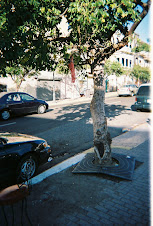-25.jpg)
-24.jpg)
























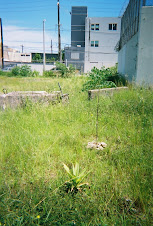




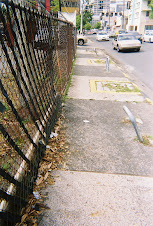
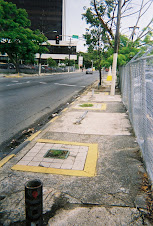
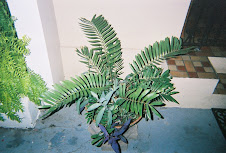




-22.jpg)
-25.jpg)
-24.jpg)






-16.jpg)
-13.jpg)
-08.jpg)

















































2 comentarios:
Over here, our government is doing their best to preserve our rainforests that are home to a wide array of flora and fauna. But then again, the treasures inside the forest are a big attraction to tourist, scientist and adventure seekers...
Lets hope that over there someone will determine how many people at once can
enjoy the scenery,without the destructive patterns seen in Yellowstone, USA, when hundreds of thousand jerks/jerkettes decide to
visit that park at once.
Once a rational number is reached, everyone else has to go home. Reservations are recommended and strict controls should be established.
Imagine a parking lot. YOU connect
a counting gadget with a barrier. Once that number is reached you close. When twenty or thirty people
leave, you let the same amount enter.
People either go home and come back another time, or wait with the motor of their vehicles off to stop noise and pollution, one of the biggest problems in many parks.
Every problem has a simple solution. It is a matter of thinking to find it. Unfortunately it seems that those
responsible to solve these problems
suffered brain damage in their early
childhood. With evident results.
Publicar un comentario